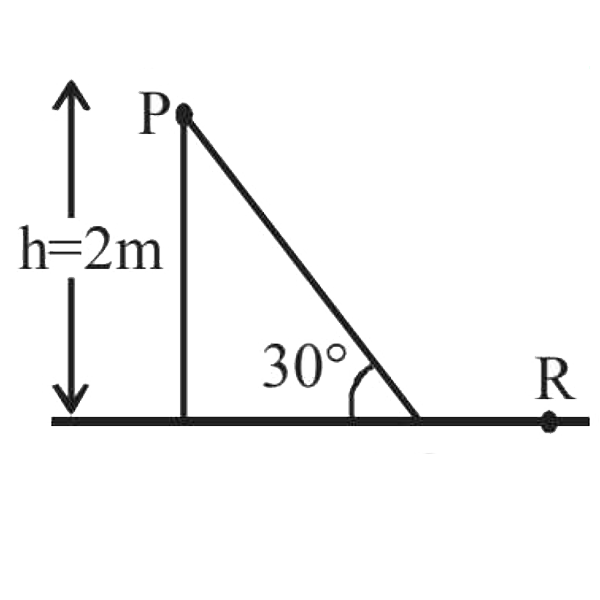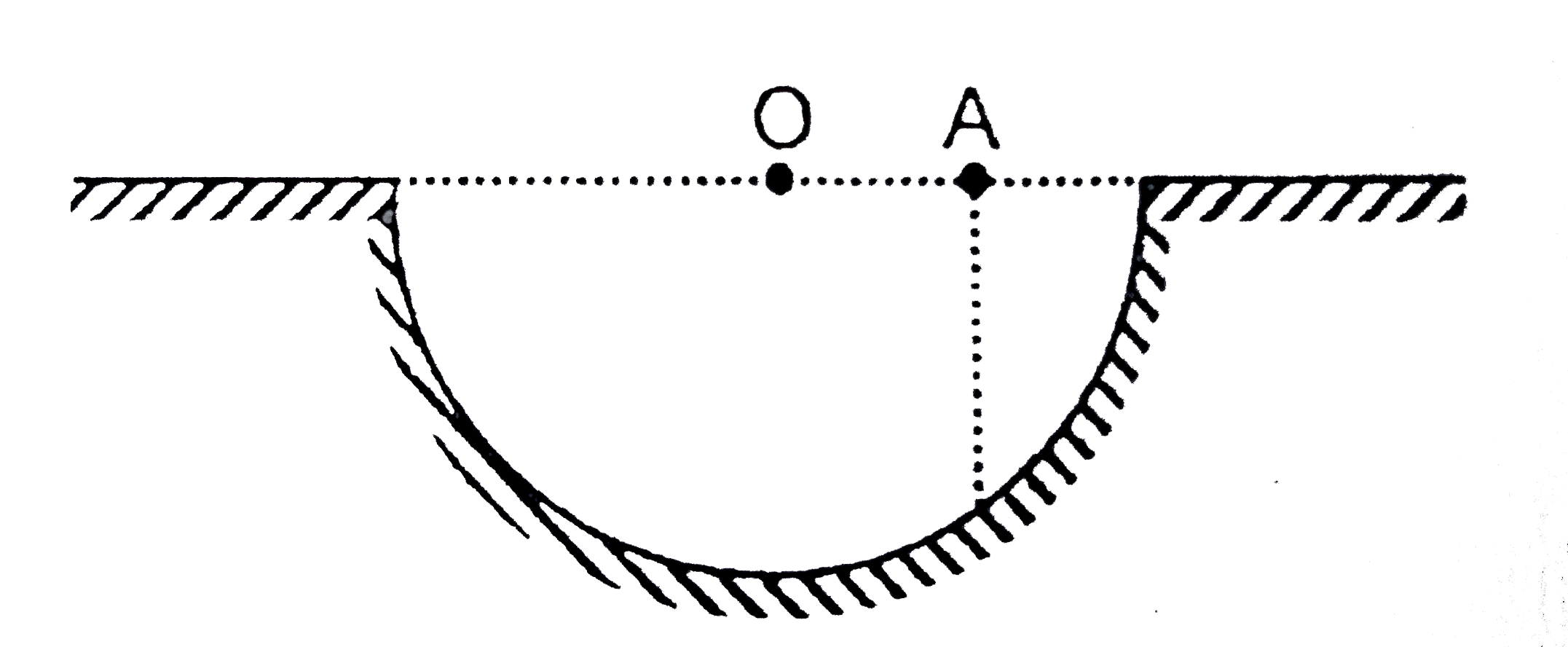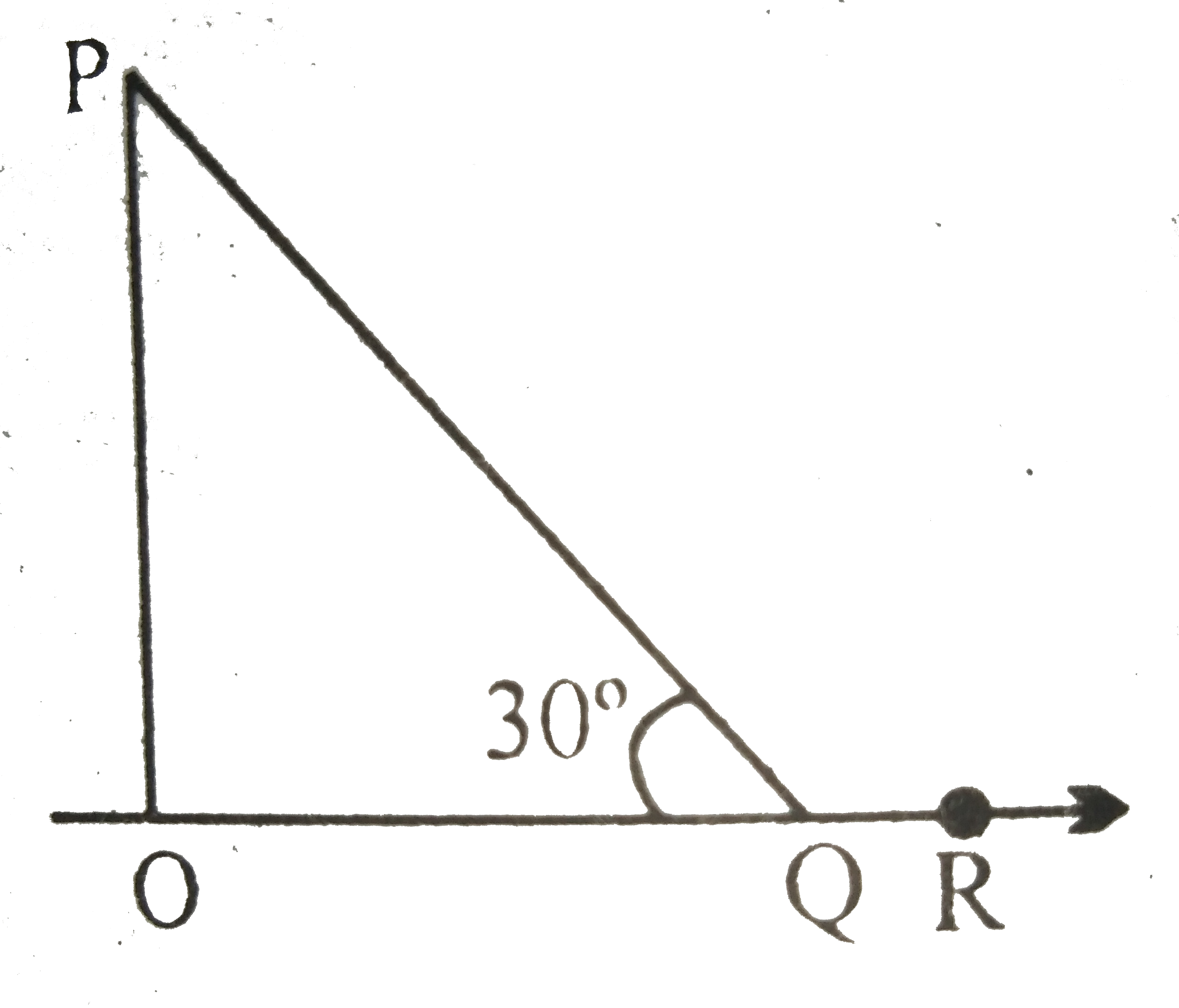A point particle of mass m, moves long the uniformly rough track PQR as shown in figure. The coefficient of friction, between the particle and the rough track equals μ. The particle is released, from rest from the point P and it comes to rest at a point R. The energies, lost by the ball, over the parts, PQ and QR, of the track, are equal to each other, and no energy is lost when particle changes direction from PQ to QR.
The value of the coefficient of friction μ and the distance x (=QR), are, respectively close to:
 Solution in Marathi
Solution in Marathi
0.2and3.5m
0.29and3.5m
0.29and6.5m
0.2and6.5m
The correct Answer is:B
Step by step video & image solution for A point particle of mass m, moves long the uniformly rough track PQR as shown in figure. The coefficient of friction, between the particle and the rough track equals mu. The particle is released, from rest from the point P and it comes to rest at a point R. The energies, lost by the ball, over the parts, PQ and QR, of the track, are equal to each other, and no energy is lost when particle changes direction from PQ to QR. The value of the coefficient of friction mu and the distance x (=QR), are, respectively close to: by Physics experts to help you in doubts & scoring excellent marks in Class 11 exams.
Updated on:21/07/2023Topper's Solved these Questions
- FRICTION IS SOLIDS AND LIQUIDS BOOK - TARGET PUBLICATIONCHAPTER - FRICTION IS SOLIDS AND LIQUIDS EXERCISE - MCQ (EVALUATION TEST)
21 Videos
- FRICTION IS SOLIDS AND LIQUIDS BOOK - TARGET PUBLICATIONCHAPTER - FRICTION IS SOLIDS AND LIQUIDS EXERCISE - MCQ (CRITICAL THINKING)
66 Videos
- FORCE BOOK - TARGET PUBLICATIONCHAPTER - FORCE EXERCISE - Evaluation Test
18 Videos
- GravitationBOOK - TARGET PUBLICATIONCHAPTER - GravitationEXERCISE - Exercise
273 Videos
Similar Questions
A body while sliding went straight down an incline of 45∘ to the horizontal and was subjected to a coefficient of kinetic friction of 0.20. Starting from rest, hwo long did it take him to reach a speed of 50km/hr? (Ignore air resistance and take h=10m/s2)
View SolutionFrictional force is ______.
View SolutionA hammer og mass M falls from height h to drive a pile of mass m into the ground. The hammer makes the pile pentrate in the ground to a distance d, opposition force of penetration is given by -
View SolutionWhich of the following is NOT the characteristic of gravitational force ?
View SolutionA small sphereical ball is released from a point at a height h on a rough track shown in figure. Assuming that it dow not slip anywhere, find its linear speed when it rolls on the horizontal part of the track.

View SolutionA point particle of mass m, moves long the uniformly rough track PQR as shown in figure. The coefficient of friction, between the particle and the rough track equals μ. The particle is released, from rest from the point P and it comes to rest at a point R. The energies, lost by the ball, over the parts, PQ and QR, of the track, are equal to each other, and no energy is lost when particle changes direction from PQ to QR.
The value of the coefficient of friction μ and the distance x (=QR), are, respectively close to:

View SolutionA particle of mass m=5.00kg is released from point A and it slides on the frictionless track shown in figure. Determine (a) the particle's speed at points B and C and (b) the net work done by the gravitational force as the particle moves from A to C.

View SolutionFigure shows a circular frications trck of radius R, centred at point O. A particle of mass M is released from point A(OA=R/2). After collision with the track, the particle moves along on the track. Then the coefficient of restitution e is.

View SolutionA block is released from rest from top of a rough curved track as shown in figure. It comes to rest at some point on the horizontal part. If its mass is 200 gm, calculate work by friction is joules

View SolutionA block weighing 10 N travels down a smooth curved track AB joined to a rough horizontal surface (figure). The rough surface has a friction coefficient of 0.20 with the block. If the block is released from rest on the track from a point 1.0 m above the horizontal surface, the distance it will move on the rough surface is
View Solutionm द्रव्यमान का एक बिंदु कण एक खुरदरे पथ PQR ( चित्र देखिए ) पर चल रहा है । कण और पथ के बीच घर्षण गुणांक μ है । कण P छोड़े जाने के बाद R पर पहुँचकर रुक जाता है । पथ के भाग PQ और QR तक चलने में कण द्वारा की गई ऊर्जाएँ बराबर हैं । PQ से QR पर होने वाले दिशा बदलाव में कोई ऊर्जा व्यय नहीं होती । तब μ और दूरी x(QR) के मान लगभग हैं क्रमश :

View Solutionm द्रव्यमान का एक बिंदु कण एक खुरदरे पथ PQR पर रखा है। कण और पथ के बीच घर्षण गुणांक μ है। कण P से छोड़े जाने के बाद R पर पहुंच कर रुक जाता है। पथ के भाग PQ और QR पर चलने में कण द्वारा खर्च की गई ऊर्जाएं बराबर है। PQ से QR पर होने वाले दिशा बदलाव में कोई ऊर्जा खर्च नहीं होती है। तब μ और दुरी x(=QR) के मान लगभग है, क्रमशः
View Solutionm ভরের একটি কণা একটি অমসৃণ পথ PQR বরাবর চলছে পথ এবং কণাটির মধ্যে ঘর্ষণ গুণাঙ্ক μ। P বিন্দু থেকে কণাটিকে ছেড়ে দেওয়া হল এবং সেটি R বিন্দুতে পৌঁছে স্থির অবস্থায় এল। কনাটি তার যাত্রাপথের PQ এবং QR অংশ যেতে সমপরিমাণ শক্তি হারায়। এক্ষেত্রে কণাটি PQ পথ থেকে অভিমুখ পরিবর্তন করে QR পথে যেতে কোন শক্তি ক্ষয় না হলে ঘর্ষণ গুণাঙ্ক ও QR পথের দৈর্ঘ্য (x)যথাক্রমে-

View SolutionA point particle of mass m, moves long the uniformly rough track PQR as shown in figure. The coefficient of friction, between the particle and the rough track equals μ. The particle is released, from rest from the point P and it comes to rest at a point R. The energies, lost by the ball, over the parts, PQ and QR, of the track, are equal to each other, and no energy is lost when particle changes direction from PQ to QR.
The value of the coefficient of friction μ and the distance x (=QR), are, respectively close to:

View SolutionA solid cylinder of mass M and radius R rolls down an inclined plane of height h without slipping. The speed of its centre when it reaches the bottom is.
View Solution
